Aberdovey, or Aberdyfi, is a village situated on the north side of the Dyfi estuary, on the west coast of Wales, in the historic county of Merionethshire. The village was founded around the harbour and shipbuilding industry, but is now best known as a seaside resort. The men and women of Aberdyfi who fell during both World Wars are commemorated on the village war memorial, which is set within the front wall of the church enclosure on the promenade. (The spelling of Aberdyfi was used during both wars, so will be used here).
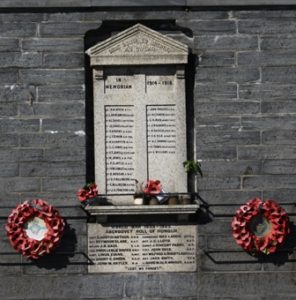
The Great War, 1914 – 1918
Richard Walter Atkin, Lieutenant, Royal Field Artillery. Richard was born in Kensington on 8 April 1897, the son of the Right Hon. Baron James Richard Atkin, Lord Justice of the Court of Appeal, and Lucy Elizabeth, Lady Atkin, daughter of William Hemmant, of Sevenoaks. The family lived at Evelyn Gardens, London, but also had a home at Craig-y-Don, Aberdyfi. Richard was educated at Winchester College and the Royal Military Academy, Sandhurst before being commissioned into the Royal Field Artillery in 1915. He embarked for France in March 1916, joining the 92nd Brigade, Royal Field Artillery and was wounded at the Somme in October that year. He re-joined his battery prior to its move to the Ypres Salient, where it provided artillery cover for the infantry assaults during the Third Battle of Ypres. On 14 August 1917 his battery was in action covering troops fighting along the Steenbeek, when a German shell crashed into his gun-pit, killing Richard and his gun-crew. Richard was 20 years old and is buried in Dragoon Camp Cemetery, Belgium. His first cousin once removed was Lieutenant Laurence Ruck, who is also commemorated on the Aberdyfi Memorial.
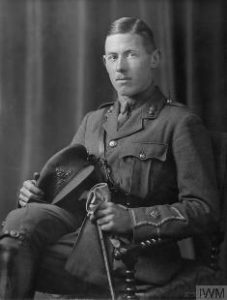

Leslie Shorland-Ball, Second Lieutenant, Royal Irish Fusiliers. Leslie was born at Barton upon Irwell, Eccles, Lancashire on 1 February 1883, the son of George Shorland-Ball and Amy Shorland-Ball (nee Boddington). He was educated at Abbey School, Beckenham and at Shrewsbury School, where he was a member of the Inns of Court Officers Training Corps. Leslie was the secretary of the Aberdyfi Golf Club for several years prior to the war, so must have had a residence in the town. He was commissioned into the 3rd Battalion, Royal Irish Fusiliers on 7 October 1915 and after training was posted to the 8th Battalion, Royal Irish Fusiliers, which was attached to 49 Brigade, 16th (Irish) Division. He embarked for France with the battalion at Southampton on 17 February 1916, and the Division moved to the trenches at Sailly La Bourse and Vermelles. After several months in the Loos trenches, the 16th Division moved to the Somme in August 1916. On 5 September 1916, Leslie’s battalion was ordered to establish a line in front of Leuze Wood. The men dug trenches throughout the night, but a salient had been formed and in the morning the Germans counter-attacked. Leslie was killed in action here on 6 September 1916, aged 33. He has no known grave and is commemorated on the Thiepval Memorial, Somme.
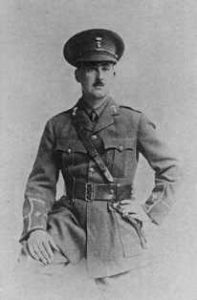
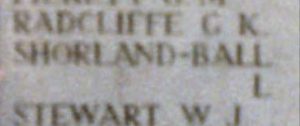
Charles Lewis Burgess, Private, 15193, Royal Defence Corps. Charles was born at Pimlico, London in 1883, the son of George Burgess and Mary Burgess (nee Lewis). The family later returned to Mary’s native Aberdyfi and resided at Milverton, Aberdyfi, where Charles ran his own decorating and painting business. Charles married Margaret Jane Lewis at Aberdyfi in 1911, and the couple had two sons. He enlisted into the Royal Welsh Fusiliers on 4 January 1915 but must have been passed as unfit for infantry duty, as he was subsequently transferred to the 327th Protection Company, Royal Defence Corps. Charles then served on the Home Front until being discharged from the army as medically unfit on 20 July 1917, returning home to his family. He died of tuberculosis at Aberdyfi on 16 March 1918. The 35-year-old was buried in Aberdyfi Cemetery. Charles is not commemorated on the Aberdyfi war memorial.
John Clement Davies, Private, 60709, Welsh Regiment. John was born in 1898, the son of John Davies and Elizabeth Davies (nee Baines), of 31, Copper Hill Street, Aberdyfi. He enlisted at Dolgellau into the army and after training was posted to France, joining the 14th (Swansea) Battalion, Welsh Regiment, which was attached to 114 Brigade, 38th (Welsh) Division. He joined the battalion following the Division’s withdrawal from the Somme, where it had seen heavy fighting during the assaults on Mametz Wood. The Division moved via Hébuterne to Boesinghe, on the Yser Canal, where it remained until launching its attack on Pilckem Ridge on 31 July 1917, as part of the opening offensive of the Third Battle of Ypres. John was killed in action during the opening day of the battle, of 31 July 1917, aged 19. He has no known grave and is commemorated on the Tyne Cot Memorial, Belgium.
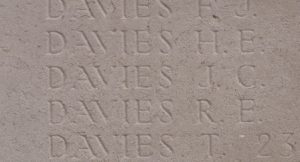
Louis Hugh Davies, Private, 12045, South Staffordshire Regiment. Louis (or Hugh Lewis Davies) was born on 11 February 1896, the son of Hugh Davies and Marret Davies (nee Griffiths), of 52, Copper Hill Street, Aberdyfi. He enlisted at West Bromwich into the 7th Battalion, South Staffordshire Regiment on 31 August 1914. The battalion was attached to 33 Brigade, 11th Division. During July 1915 the Division embarked at Liverpool and on 7 August 1915 landed at Gallipoli, where it remained until being evacuated in December 1915 to Imbros. During February 1916 the Division moved to Egypt and in July 1916 embarked for France. The Division then took part in the Battle of Flers-Courcelette during the Somme Offensive, and spent the winter on the Ancre, before moving to Ypres the following year. In June 1917 the Division took part in the Battle of Messines, seeing heavy casualties during its attack between 7-10 June. The Division had a period of rest before moving back into the line by the middle of July. Louis was killed when his battalion was in the line on 27 July 1917. The Passchendaele offensive was about to be launched, and the 7th South Staffs was ordered to send out patrols as reports had been received that the Germans had withdrawn. The various patrols encountered strong German resistance, and around 60 casualties were suffered. Among those killed was Louis. The 21-year-old has no known grave and is commemorated on the Menin Gate Memorial, Ypres.
Owen David Davies, Private, 35234, York and Lancaster Regiment. Owen was born in 1877, the son of Robert Davies and Margaret Davies, of Timber Yard Cottage, Aberdyfi. He married Margaret Ellen Jones in 1903 and the couple set up home at Penygraig, Eglwysbach. Owen worked as a joiner prior to enlisting enlisted at Conway into the Royal Anglesey Royal Engineers, but after training was transferred to the 7th Battalion, York and Lancaster Regiment, which was in France as the Pioneer Battalion to the 17th Division. The Division spent its initial period of trench familiarisation in the southern area of the Ypres salient and took part in fighting at the Bluff during February 1916 before moving south, where they fought during the opening of the Somme offensive, at the Battle of Albert, where the Division captured Fricourt. During the spring of 1917 the Division took part in the Battle of Arras, before moving back to Ypres, and taking part in the First and Second Battles of Passchendaele. Owen was killed whilst his battalion was at work constructing a trench to Pheasant Farm, Ypres on 29 October 1917. The 39-year-old is buried in Bard Cottage Cemetery, Belgium.
Thomas Walter Evans, Engine Room Artificer, 2048, Royal Naval Reserve. Thomas was born on 13 December 1886, the son of John Evans and Emma Evans, of 14, Market Square, Aberdyfi. He enlisted into the Royal Naval Reserve at Aberystwyth on 4 February 1916 and was posted to HMS Lucia, a submarine depot ship in the Tees. He did not serve for long, but was discharged as “unsuitable” on 10 October 1916. Thomas died at Chorlton, Lancashire on 16 March 1920, aged 35, and is buried in Aberdyfi Cemetery. Thomas is not commemorated on the Aberdyfi War Memorial, even though he is recognised as an official war casualty by the CWGC.

Lewis Thomas Eynon, Private, 2214, Royal Welsh Fusiliers. Lewis was born in 1883, the son of John Eynon and Winifred Eynon (nee Hughes), of 5, Evans Terrace, Aberdyfi. His father was a sailor, who drowned in 1895. Lewis worked as a labourer prior to enlisting at Aberdyfi into the 1/7th Battalion, Royal Welsh Fusiliers. The battalion mobilised at Montgomery on 4 August 1914 as part of North Wales Brigade, Welsh Division. The Division moved to Bedford in May 1915 where it was reorganised, becoming 158 Brigade, 53rd (Welsh) Division, and on 19 July 1915 sailed from Devonport for Imbros, before landing at Suvla Bay on 9 August 1915. The campaign proved to be a disaster for the Allies and the Peninsula was evacuated by January 1916. At some time, Lewis was sent home, and he died at Prees Heath Military Hospital on 28 February 1916, whilst attached to the 3/7th Battalion, Royal Welsh Fusiliers. The remains of the 33-year-old were brought home for burial in Aberdyfi Cemetery.
Robert Owen Griffith, Gunner, 205513, Royal Field Artillery. Robert was born in 1897, the son of Robert Griffith and Jane Griffith, of 3, Tregonwell, Aberdyfi. He worked as a clerk prior to enlisting into the Royal Field Artillery on 18 December 1916 and was posted to Bulford Camp for training after being mobilised on 3 January 1917. He became attached to the 71st Division, Royal Field Artillery at Bulford, but by the end of January was hospitalised after falling ill and was diagnosed as having contracted tuberculosis. Within months his poor health had led to him being discharged as medically unfit on 22 May 1917. Robert returned home to Aberdyfi, where he died of tuberculosis on 29 June 1917, aged 20. He was buried in Aberdyfi Cemetery.
David John Hughes, Private, 13926, King’s Shropshire Light Infantry. David was born in 1886, the son of Owen Hughes and Annie Morris Hughes (nee Edwards), of Cader View, Towyn. He married Maggie Williams, of 1, Bodfor Terrace, Aberdyfi in 1915, just after having enlisted at Swansea into the King’s Shropshire Light Infantry. David was posted to the 8th Battalion, KSLI, which was attached to 66 Brigade, 22nd Division. On 5 September 1915 David landed in France with the battalion, but his stay in France was short lived, as the 22nd Division was transferred to the Salonika front and entrained for Marseilles before sailing for Salonika on 28 October 1915. The Division took part in the Retreat from Serbia during December 1915, following the defeat of the Serb army by the Bulgarians. Between 10 to 18 August 1916 the Division fought at the battle of Horseshoe Hill, then between 13 to 14 September 1916 at the battle of Machukovo. David was killed in action on 22 April 1917, aged 31. He is buried in Karasouli Military Cemetery, Salonika. David is not commemorated on the Aberdyfi War Memorial.


David Rees Jones, Private, 3228, Royal Welsh Fusiliers. David was born in 1884, the son of David Jones and Margaret Jones (nee Rees), of Prospect Place, Aberdyfi. He married Sarah Williams in 1907 and the couple set up home at 32, Terrace Road, Aberdyfi. David enlisted into the 7th Battalion, Royal Welsh Fusiliers on 5 November 1914, and remained on home service. His health deteriorated quickly after enlisting and he was discharged from the army as unfit on 11 May 1915, after having been diagnosed as suffering from tuberculosis. David returned home to his wife, but his health worsened and he died of tuberculosis on 4 January 1920, aged 35. He is buried in Aberdyfi Cemetery. David is not commemorated on the Aberdyfi War Memorial, even though he is an official casualty of war.
Edwin Evan Jones, Lieutenant, Labour Corps. Edwin was born in 1879, the son of John Jones and Ann Jones, of Chelsea, London. His parents were from west Wales, his father from Aberdyfi and his mother from Dinas Mawddy. The family ran a successful business, John Jones (Chelsea) Ltd, at their factory at Carlisle Works, Chelsea, and Edwin had run it himself, being granted the Freedom of the City of London on 18 May 1909. Edwin enlisted into the Royal Army Medical Corps upon the outbreak of war, and served in Egypt from 17 March 1915. Edwin was commissioned into the Egyptian Labour Corps on 29 April 1918, and continued to serve in the Middle East until after the Armistice. Edwin returned to England aboard the same ship as Sir Edmund Allenby, intending to take up the reins of the family business, John Jones, Carlisle Works, Chelsea Ltd. He was on holiday at his parents’ home at Hyfrydle, Aberdyfi, when he suddenly became ill and died on 25 September 1919, aged 40. He was buried in Aberdyfi Cemetery. Edwin does not appear to be commemorated locally.
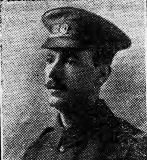
Ivor Jenkin Jones, Private, 37532, Royal Welsh Fusiliers. Ivor was born in 1896, the son of John Jones and Margaret Jones, of Penwern Farm, Cilcennin, Cardiganshire. He worked as a clerk in The National Provincial Bank at Aberdyfi prior to the war and lived at Glanaber House, Aberdyfi. Ivor enlisted there into the Royal Welsh Fusiliers on 18 December 1915. He was posted to France 25 June 1916, joining the 16th Battalion, Royal Welsh Fusiliers. The battalion was attached to 115 Brigade, 38th (Welsh) Division, and Ivor joined up with them in time to take part in the attack on Mametz Wood. After suffering heavy casualties at Mametz, by August 1916 the Division had moved to positions at Boesinghe, north of Ypres. Ivor was shot in the shoulder here on 29 July 1917, when his battalion was moving into positions ready for the assault on Pilckem Ridge. He was evacuated home for treatment, before being sent back to France in January 1918, when he was posted to the 2nd Battalion, Royal Welsh Fusiliers. The battalion had taken part in almost every major action of the war, before becoming attached to 115 Brigade, 38th (Welsh) Division at Armentieres on 3 February 1918. During April the Division was moved South, taking up positions North of Albert, from where they weathered the storm of the coming months, until the war turned during the Battle of Amiens, on 8 August, 1918. The Germans had now lost the upper hand, and the British regained the lost ground on the Somme after an attack which began on 21 August, with the 38th Welsh in the midst of the attack during the Battle of Albert, and then moving east, where they fought at the Battle of Bapaume. Ivor was killed in action during the great advance, fighting at Sailly-Saillisel, on 3 September 1918. The 22-year-old has no known grave, so is commemorated on the Vis-En-Artois Memorial, France.
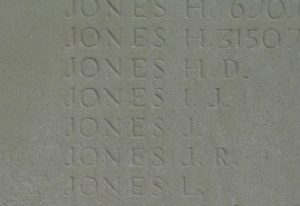
John Jones, Corporal, 2566, Royal Welsh Fusiliers. John was born in 1888, the son of John and Mary Jones, of Pant-y-Llan, Arthog. He married Catty Roberts Wynne, of The Institute, Aberdyfi, in 1913, and the couple had one child, Bradwyn. John enlisted at Barmouth into the 1/7th Battalion, Royal Welsh Fusiliers. The battalion mobilised at Montgomery on 4 August 1914 as part of North Wales Brigade, Welsh Division. The Division moved to Bedford in May 1915 where it was reorganised, becoming 158 Brigade, 53rd (Welsh) Division, and on 19 July 1915 sailed from Devonport for Imbros, before landing at Suvla Bay on 9 August 1915. The Division advanced inland, but was hindered by a lack of knowledge of the terrain and poor maps, so the advance soon turned into chaos. John was wounded during the first days at Gallipoli, and was evacuated aboard the Hospital Ship Clan McGillivray, where he died of his wounds on 12 August 1915, aged 27. His body was brought ashore and he was buried in Lancashire Landing Cemetery, Gallipoli. John is not commemorated on the Aberdyfi War Memorial, but at his native Arthog.
Joseph Jones, Gunner, L/17534, Royal Field Artillery. Joseph was born on 20 January 1893, the son of Robert Jones and Catherine Ella Jones (nee Hughes), of 35, Riddock Road, Litherland, Liverpool. His mother was the daughter of William and Margaret Hughes, of Church Street, Aberdyfi, and Joseph was well known in the village as a regular visitor there. He worked at Bootle as a butcher prior to enlisting at Liverpool into the Royal Field Artillery and was posted to D Battery, 148th Brigade, Royal Field Artillery, which was known as the County Palatine Brigade. The brigade joined the 30th Division at Grantham by 13 August 1915, comprising of four Batteries, each equipped with four 18-pounder field guns. The Division moved to France in November 1915, the 148th Battery landing at Le Havre on 29 November, and entrained for the Somme sector, taking over positions near Colincamps, then later at Bray. The division then took part in its first major action during the Somme Offensive, at the Battle of Albert on 1 July 1916, where it captured Montauban. The division remained on the Somme throughout the entire Battle, apart from a brief spell resting in the Bethune area, holding the Givenchy sector before returning to the Somme at the end of September 1916. The gun batteries of the 148th Brigade then took up positions near Delville Wood to support the fighting in the Gueudecourt area. Joseph was wounded soon afterwards by German counter-battery artillery fire and was evacuated back to hospital in Étaples, where he died of his wounds on 11 October 1916. The 23-year-old is buried in Étaples Military Cemetery, France. He is not commemorated on the Aberdyfi war memorial.


Owen Thomas Jones, Private, 44162, North Staffordshire Regiment. Owen was born in 1895, the son of Owen Jones and Mary Jones (nee Evans), of 50, Copper Hill Street, Aberdyfi. He was working as a collier at Tylorstown prior to the war and enlisted at Porth into the 9th Battalion, Welsh Regiment. Upon completing his basic training, he was posted to France, joining the 10th Battalion, North Staffordshire Regiment, which was attached to the 37th Division as Divisional Pioneers. The Division saw heavy casualties during the Somme offensive in 1916 and in 1917 took part in the Battle of Arras and the Third Battle of Ypres. During March 1918 the Division was at the Somme, and fought during the German Offensive, at the Battle of Albert. After a relatively quiet summer, the Division then took part in the great Allied advance towards the Hindenburg Line. By the start of September 1918, the 37th Division was pushing past Achiet-le-Grand, and the 10th North Staffs were hard at work repairing roads which had been destroyed by the German and filling in shell-holes. Within days the Division had pushed past Lebucquière, and some of the men of Owen’s battalion had also been put to work repairing a water pump in the nearby village of Beugny. Owen was wounded around this time and evacuated to a Field Hospital near Hazebrouck, where he died of his wounds on 14 September 1918, aged 23. He is buried in La Kreule Military Cemetery, Hazebrouck, France.


William Jones, Private, 290597, Royal Welsh Fusiliers. William was born in 1892, the son of Mary Jones, of 15, Copper Hill Street, Aberdyfi. He enlisted at Newtown into the 7th Battalion, Royal Welsh Fusiliers on 21 August 1914. He remained on home service with the 2/7th Battalion, RWF until 8 June 1917 when he landed in France and was posted from the Infantry Base Depot to the 15th Battalion, RWF, which was at Ypres attached to 113 Brigade, 38th (Welsh) Division. He joined the battalion on 15 July, while the Division was preparing to launch its offensive on Pilckem Ridge. On 23 July 1917 the 15th RWF relieved the 16th RWF in the front line on the Canal Bank and four days later, on 27 July 1917, the battalion received information that the Germans in front of them had withdrawn, so a patrol was sent out to check on the intelligence. Unfortunately, the reports were false, and the patrol came under heavy fire, taking heavy casualties. William, who was 25 years old, was among the dead. He has no known grave and is commemorated on the Menin Gate Memorial, Ypres.

Philip Solomon Joyce, Lieutenant, Royal Flying Corps. Philip was born on 1 May 1897, the son of Harry Joyce and Rachel Pauline Joyce (nee Aaron), of 11, Augustus Road, Edgbaston. The family also had a home at Coed-y-Glyn, Aberdyfi. Philip served with the Inns of Court Officer Training Corps before being commissioned into the Royal Flying Corps on 3 June 1916, and after training as a Pilot was posted to 60 Squadron, Royal Flying Corps, which had suffered heavy losses during the Battle of the Somme. The Squadron re-equipped with Nieuport Scouts early in 1917. On 6 March 1917 Philip was flying his Nieuport XVI, Serial A208 on patrol when he was shot down by Oberleutnant Hans Kummetz and crashed in flames near Arras. The 20-year-old has no known grave and is commemorated on the Arras Flying Services Memorial, France.
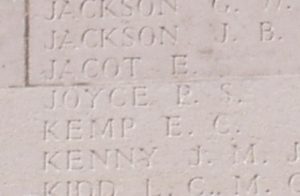
Ivor Lumley, Private, 35509, Machine Gun Corps. Ivor was born in 1893, the son of John Lumley and Gwen Lumley (nee Evans), of Trem-y-Lerry, Aberdyfi. He enlisted into the 4th Battalion, Cheshire Regiment at Chester on 26 February 1916 and trained as a machine-gunner before embarking for France at Folkestone on 25 June 1916. He disembarked at Boulogne and was sent to the Base Depot at Camiers. Two weeks later he was posted to the 107th Company, Machine Gun Corps which was attached to the 36th (Ulster) Division. The Division had taken heavy casualties during the opening day of the Battle of the Somme on 1 July 1916, and moved to the St. Omer area to rebuild. Ivor would have been among a large number of reinforcements to join the Division at the time. It did not go back into action until taking part in the Battle of Messines in June 1917 and then fought at the Third Battle of Ypres and at the Battle of Cambrai later that year. The Division was still in the Cambrai sector when the army was reorganised in March 1918 and Ivor’s Company became the 36th Battalion, Machine Gun Corps. On 21 March 1918 the Division was among those hit hard by the German Spring Offensive, and saw heavy fighting over the coming days. Ivor was killed in action here on 22 March 1918, aged 25. He has no known grave and is commemorated on the Arras Memorial, France.
Charles Henry Millington, Private, 54455, Royal Welsh Fusiliers. Charles was born at Merthyr in 1884, the son of Richard and Elizabeth Millington. By 1891 the family had moved to 12, Copper Hill Street, Aberdyfi. Charles worked there as a gardener prior to enlisting into the Royal Welsh Fusiliers and was posted to France late in 1916, joining the 2nd Battalion, Royal Welsh Fusiliers. The battalion was attached to 19 Brigade, and had been attached to the 6th Division early in the war, and had then been attached to two other divisions before being attached to the 33rd Division by 25 November 1915. It had taken part in some terrible fighting during the blowing of the Red Dragon crater near Cuinchy on 27 June 1916. Charles probably joined the battalion when it rebuilt its strength prior to the 33rd Divisions move to the Somme later that year and took part in the assaults on High Wood. The Divisions next major action was during the Battle of Arras the following year. On 14 April 1917 the 2nd RWF moved from Henin towards the Hindenburg Line, and a position known as Tunnel Trench. The Division had been given the task of assaulting the Hindenburg Line in that sector and advance towards an objective some 300 years west of the River Sensée. The attack began at dawn on 23 April 1918, and the 2nd RWF found itself caught up in terrible fighting. Charles was killed during the day. The 32-year-old has no known grave and is commemorated on the Arras Memorial, France. His brother, Edward, was killed a year later.
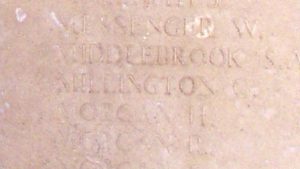
Edward Richard Millington, Lance Corporal, 10052, South Wales Borderers. Edward was born at Merthyr in 1882, the son of Richard and Elizabeth Millington. By 1891 the family had moved to 12, Copper Hill Street, Aberdyfi. Edward had originally enlisted into the Welsh Regiment at Merthyr on 23 January 1904 but had since transferred to the 2nd Battalion, South Wales Borderers and was in China with the battalion at the outbreak of war. The battalion fought a famous operation alongside the Japanese against the German held port of Tsingtao, before embarking at Hong Kong on 4 December 1914 for Plymouth. The battalion moved to Rugby, joining 87 Brigade, 29th Division, and the entire Division sailed from Avonmouth for Alexandria on 17 March 1915, before landing at Gallipoli on 25 April 1915. The Division fought throughout the Gallipoli campaign before evacuation to Egypt on 11 January 1916. It moved to France on 15 March 1916, and saw heavy fighting during the opening day of the Battle of the Somme, attacking Y-Ravine, near Beaumont Hamel. During 1917 the Division took part in the Battle of Arras, before moving north and taking part in the Third Battle of Ypres. The Division was then moved south and took part in the Battle of Cambrai later that year, wintering in the Cambrai sector. The Division then took part in the fighting which followed the launching of the German Spring Offensive of 21 March 1918, before being moved to Flanders, and was hit by the second phase of the German offensive, on the Lys, from 9 April. Edward was killed on the Lys, during heavy fighting around Les Haies Basses on 11 April 1918, aged 33. He has no known grave and is commemorated on the Ploegsteert Memorial, Belgium. The 2nd SWB suffered the loss of 532 men from 13 April until being relieved two days later. His brother Charles had been killed a year earlier.
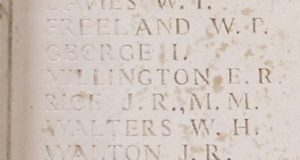
David Morgans, Private, 39052, South Wales Borderers. David was born in 1897, the son of John Morgans and Susannah Morgans, of 52, Copper Street, Aberdyfi. He enlisted into the 7th Battalion, Royal Welsh Fusiliers, and served at home with the 2/7th Battalion until being posted to France in 1916, joining the 1st Battalion, South Wales Borderers. Within months of arriving in France his health began to suffer and David was diagnosed as having contracted tuberculosis. He was brought back to the Military Hospital at Epsom where he died of tuberculosis on 18 July 1917, aged 20. His remains were brought home for burial at Aberdyfi Cemetery.
William James Morris, Second Mate, Mercantile Marine. William was born in Liverpool on 25 March 1860, the son of a Mariner, William James Morris, of Aberdyfi, and his wife Margaret Morris (nee James). By 1871 William and his brother Richard were living with their grandmother, Ann Morris, at Market Street, Aberdyfi. William went to sea in 1872 at 12 years of age, aboard the Smack Midas, eventually qualifying as a Master Mariner at Liverpool on 12 July 1884. He married Catherine Morris, of Aberdyfi, in London on 22 April 1889 and the couple initially boarded at 26, Halsey Street, Chelsea, before moving to Maglona, New Street, Aberdyfi. The couple then moved to 2 Cliffside, Aberdyfi, where their three children were born. William lost a ship, the SS Thunder, in 1889 and had his Masters licence suspended for a year. Although able to resume Captaincy after his licence had been restored, he never did, and spent the remainder of his life and career as a First or Second Mate. By the time war erupted, William had become First Mate of the merchant steamer SS Hemisphere and was taken prisoner when the ship was forced to surrender his ship to the Germans after encountering the cruiser Kronprinz Wilhelm off the coast of Argentina early in the war. After over a month in captivity, with failing health, William was repatriated to England. By now the family home was at 11, Sea View, Aberdyfi. He went back to sea after recovering and took up a post as Second Mate aboard the SS City of Lincoln, before becoming Second Mate aboard the SS Stanley Hall, and made his final voyage aboard her in June 1917. By the time that Stanley Hall had docked at Alexandria, William’s health had deteriorated and he was taken to the Deaconnesses’ Hospital at Alexandria, where he died of rheumatic heart disease on 4 July 1917. The 57-year-old was buried in Chatby British Protestant Cemetery at Alexandria.


John Phillips, Lieutenant, Royal Naval Reserve. John was born at Aberdyfi on 4 October 1870, the son of John Phillips and Mary Phillips, of 11, Chapel Square. He was the husband of Edith Mary Phillips, of Northend Bungalow, 31, Coleys Lane, Northfield, Birmingham. He was a long serving mariner, who had joined the Royal Navy as a young man, before retiring on 12 June 1914, with the rank of Warrant Engineer. Following the outbreak of war, he re-enlisted, joining the Royal Naval Reserve, and was posted aboard the Beagle Class destroyer, HMS Racoon. On 9 January 1918 Racoon was on patrol off the north coast of Ireland when a severe snowstorm blew up, and Racoon struck some rocks and sank, going down with over a hundred men. John’s body was discovered washed ashore at Ault, Barra on 4 May, and identified by a brass label, before he was buried four days later in Cuidhir (Or Barra Parish) Churchyard, Isle of Barra, Scotland.
Brian Christopher Power, Lance Corporal, 296, Royal Warwickshire Regiment. Brian was born at Coleshill, Warwickshire in 1896, the son of Industrialist Frederick Arthur Power and his wife Mary Power (nee Day). The family moved to Brynmeddyg, Aberdyfi prior to the war. Brian travelled back to Birmingham to enlist into the 14th Battalion, Royal Warwickshire Regiment soon after the outbreak of war. The battalion was raised at Birmingham by the Lord Mayor in September 1914, before moving to Wensleydale to join 95 Brigade, 32nd Division. Brian landed in France with the battalion on 21 November 1915, and moved to Vignacourt, in the Somme sector, leaving the 32nd Division to join 13 Brigade, 5th Division. The Division then moved to the Arras sector, before being moved south to take part in the Somme offensive in the middle of July 1916. The Division then took over recently captured German trenches between Longueval and Bazentin-le-Grand and on 22 July received orders for an attack on the Germans facing them. At 22.00 that night the attack began, but an overwhelming spray of machine-gun fire was poured onto the advancing troops. Over the next few hours desperate fighting continued, but the 14th Warwick’s had suffered the loss of 469 men, killed, wounded or missing. Among the dead, officially recorded as having been killed on 23 July 1916, was the 20-year-old Brian. He has no known grave and is commemorated on the Thiepval Memorial, France.
James Adolphus Proctor, Second Lieutenant, Royal Field Artillery. James was born on 5 July 1896, the son of Edward Bernard Proctor and Helen Mary Elizabeth Proctor (nee Dixon), of Preswylfa, Aberdyfi. He was educated at Birkenhead School prior to taking up a position with the Alfred Holt Shipping Line. Voluntarily enlisting into the army, James originally served as a Gunner with the 5th Divisional Ammunition Column, Royal Field Artillery, and gained a commission into the Royal Field Artillery on 10 June 1918, joining the 402nd Battery, RFA. He joined the battery in France in time to take part in the great offensive, which was launched on 21 August 1918, following the Australian success at Villers-Bretonneux on 8 August, when the German will to fight was broken. James was wounded during the offensive, and died of his wounds on 18 September 1918, aged 22. He is buried in Marteville Communal Cemetery, Attilly, France.
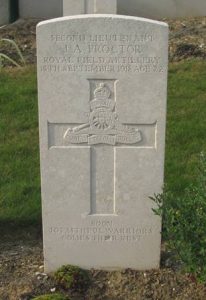
John Richards, Private, 2785, Royal Welsh Fusiliers. John was born in 1894, the son of Richard Cadwaladr Richards and Catherine Richards (nee Pugh), of Railway Crossing, Llanbedr. He enlisted at Newtown into the 1/7th Battalion, Royal Welsh Fusiliers. The battalion mobilised at Montgomery on 4 August 1914 as part of North Wales Brigade, Welsh Division. The Division moved to Bedford in May 1915 where it was reorganised, becoming 158 Brigade, 53rd (Welsh) Division, and on 19 July 1915 sailed from Devonport for Imbros, before landing at Suvla Bay on 9 August 1915. The Division advanced inland, but was hindered by a lack of knowledge of the terrain and poor maps, so the advance soon turned into chaos. John was killed in action on the following day, 10 August 1915, aged 21. He has no known grave and is commemorated on the Helles Memorial, Gallipoli. He is also commemorated on the war memorials at Dyffryn Ardudwy and at Llanbedr.
Laurence Humphrey Ruck, Lieutenant, Worcestershire Regiment. Laurence was born on 11 January 1889, the son of Colonel Oliver Edwal Ruck and Mrs Eve Eleanor Annie Ruck (nee Pedley), of Brynderw, Aberdyfi. His father was from Pennal, and had a distinguished military career, which included playing for the Royal Engineers team which lost the 1878 FA Cup final. Laurence followed in the family tradition and entered the Royal Military Academy, Sandhurst, before being commissioned into the 1st Battalion, Worcestershire Regiment on 11 May 1910. He served in Egypt with the battalion, which was rushed back to England following the outbreak of war, joining 24 Brigade, 8th Division. The battalion landed at Le Havre on 6 November 1914 and the Division moved to Flanders to reinforce the severely depleted BEF. It saw its first major action as part of IV Corps at the Battle of Neuve Chapelle, which was launched on 10 March 1915. The 1st Battalion, Worcester Regiment was in Brigade reserve during the day, but at 14.00 received orders to move forward to support the attacking battalions, who were suffering due to poor artillery support, and advanced into the fray. Fighting was fierce and conditions were terrible, but fighting continued throughout the following days, when a German counter-attack brought an end to the offensive. Almost 12,000 casualties had been suffered by the British. Among the dead was 26-year-old Laurence. He has no known grave and is commemorated on the Le Touret Memorial, Richebourg-L’avoue, France.
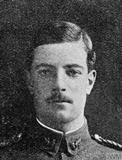
Robert Savage, Private, 203674, Yorkshire Regiment. Robert was born at Clitheroe, Lancs in 1885, the son of William Henry Savage and Isabella Savage (nee Helme). He married Annie Davies, a domestic servant from Aberdyfi, at Skipton in 1914 and the couple moved to her native Aberdyfi, setting up home at 23, Church Street, where their son John was born the following year. Robert had enlisted at Clitheroe into the 4th Battalion, Yorkshire Regiment, and was posted to France at some time after the summer of 1916. The battalion was attached to 150 Brigade, 50th (Northumbrian) Division. The Division fought on the Somme during the summer of 1916 and wintered in the area before taking part in the Battle of Arras the following spring. It then moved north and fought at the Third Battle of Ypres, before moving back to the southern Somme sector. The Division was caught up in the German Spring Offensive on the Somme from 21 March 1918 and the battered Division then moved to Flanders to rebuild. It was caught up in the second phase of the German offensive during the Battle of the Lys from 9 April, and again suffered terribly. The now badly depleted Division was moved south to the Aisne sector to rest and rebuilt, but was unfortunately caught up in the final phase of the German offensive, which hit the Aisne sector from 27 May 1918. Robert survived all of these major actions, but died during a lull in the fighting, on 8 July 1918, aged 32. He is buried in Sissonne British Cemetery, France. His brother, William Savage, was also killed in France the same year.
Edwin Guy Silk, Private, 80, Royal Warwickshire Regiment. Edwin was born at Solihull in 1883, the son of Edwin Silk and Eleanor Maria Silk (nee Prosser). The family later resided at 11, Penhelig, Aberdyfi. Edwin enlisted at Birmingham into the Royal Warwickshire Regiment, and was posted to France on 21 November 1915, joining the 1st Battalion, Royal Warwickshire Regiment, which was attached to 10 Brigade, 4th Division. The Division, which had been in France since 1914, took part in the Somme offensive in 1916, and in the spring of 1917 fought at the Battle of Arras, before moving back to Ypres, taking part in the Battle of Polygon Wood, the Battle of Broodeseinde, the Battle of Poelcapelle and the First Battle of Passchendaele. Edwin returned home on leave at some time in 1917, and married Ethel Meadowcroft, before returning to the front. In spring 1918 the Division fought at the First Battle of Arras, and was then moved back to Flanders, where it took part in the Battle of Hazebrouck, where it played a part in the Defence of Hinges Ridge. The Division then fought at the Battle of Bethune, and during the Advance in Flanders, before moving south to play a part in the great offensive towards the Hindenburg Line. Edwin was killed during the advance towards the Canal du Nord, on 20 September 1918, aged 35. He is buried in Canadian Cemetery No. 2, Neuville-St. Vaast, France.
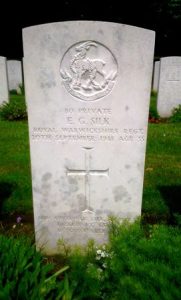
Herbert Carlisle Thomas, Sergeant, 243063, Royal Welsh Fusiliers. Herbert was born in 1895, the son of John Carlisle Thomas and Mary Hannah Thomas (nee Williams), of 15 Stuart Street, Merthyr Tydfil. He enlisted at Merthyr into the Brecknock Battalion, South Wales Borderers on 11 November 1914. He had married Catherine Jones, of 14, Copper Hill Street, Aberdyfi, at Wrexham on 2 January 1917 and their son, Herbert Cornelius Thomas, was born at Aberdyfi eight months after. Herbert had risen to the rank of Sergeant before being landing in France on 1 April 1918, joining the 1/4th Battalion, Royal Welsh Fusiliers, which was attached to the 47th (2nd London) Division. He joined a battalion which had seen heavy casualties in the previous weeks, following the German Spring Offensive of 21 March, and joined the battalion at Senlis. The battalion took up positions NW of Martinsart Wood on 5 April and over the coming days suffered a large number of casualties from German artillery fire, before being relieved and moving back to Senlis, then to Puchevillers. The battalion then enjoyed several weeks of rest, before moving to Warloy-Baillon on 2 May and beginning work on trench consolidation. Herbert was killed in action by shellfire whilst at work here on 13 May 1918. The 22-year-old is buried in Warloy-Baillon Communal Cemetery Extension, France.


Hugh Thomas, Private, 2415, Welsh Guards. Hugh was born in 1885, the son of William Thomas and Gwen Thomas (nee Jones), of Tynewydd, Aberdyfi. He worked on his father’s farm prior to the war, when he enlisted into the Welsh Guards. The Regiment was raised by Royal Warrant of 26 February 1915, at White City, before landing at Le Havre on 18 August 1915, becoming attached to 3rd Guards Brigade, Guards Division. The Division saw its first major action during the Battle of Loos, which began on 25 September 1915, remaining in the area during the coming months, where it also fought in the subsequent Action of Hohenzollern Redoubt. In July 1916 the Division moved to the Somme, where it fought at the Battle of Flers-Courcelette, and then at the Battle of Morval, capturing Lesboeufs Village. It remained here for the winter, and in March 1917 took part in the advance caused by the German Retreat to the Hindenburg Line. Later that year the Division moved north to Ypres, where it fought at the Battle of Pilckem Ridge, and through the later stages of the offensive. November saw the Division move south again, where it took part in the Battle of Cambrai. It remained in the area over the final winter of the war, and was stationed near Gouzeaucourt when the German Spring Offensive hit the area on 21 March 1918, and saw heavy fighting over the coming days during the withdrawal west. The focus of the German attack then moved north, to the Lys Valley, so the Arras sector settled down and trench warfare again became the norm. The Welsh Guards spent the coming weeks rotating in the front line near Douchy-les-Ayette. Hugh was wounded here on 4 May, and was evacuated to the 56th Casualty Clearing Station, Gézaincourt, where he died of his wounds on 9 May 1918, aged 34. He is buried in Bagneux British Cemetery, Gézaincourt, France.

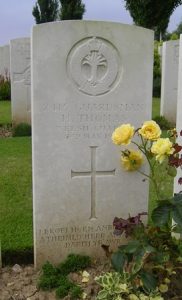
Arthur Williams, Lance Corporal, 26541, South Wales Borderers. Arthur was born in 1895, the son of Edward Williams and Emma Williams (nee Green), of 9, Penhelig, Aberdyfi. He resided in Aberystwyth prior to the war, where he worked as a Postman. Arthur enlisted at Aberystwyth into the South Wales Borderers, and was posted to France during 1916, joining the 1st Battalion, South Wales Borderers, which was attached to 3 Brigade, 1st Division. Arthur would have fought on the Somme with the division during the summer of 1916. The division followed the German retreat to the Hindenburg Line in early 1917, and was then briefed for an operation on the Flanders Coast, moving there during the summer of 1917. Whilst on the coast, the Third Battle of Ypres had stalled in the mire, and the Division was recalled to Ypres, where they fought at the Second Battle of Passchendaele. On 10 November 1917 the battalion took up a position north of Passchendaele village which had been taken a few days earlier by the Canadian forces, tasked with the capture of the Goudberg Spur. Zero hour was at 5.00 am, but by mid-morning the appalling conditions, combined with an irregular artillery barrage and German counter attacks caused the attack to falter with little gained. The battalion suffered 372 casualties and among them was Arthur who was killed in action that day, aged 22. The attack on 10 November brought an end to the Third Battle of Ypres or as it is better known, ‘Passchendaele’. Arthur was originally buried on the battlefield, but in November 1919 his body was exhumed and identified by his dog tags, before being reburied in Poelcapelle British Cemetery, Belgium.

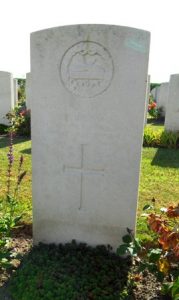
John Jones Williams, Second Lieutenant, Royal Welsh Fusiliers. John was born in 1880, the son of John Williams and Jane Williams (nee Jones), of Rose Hill, Aberdyfi. He was commissioned Second Lieutenant into the Royal Welsh Fusiliers in December 1915, but little else is currently known of his military service. John appears to have married Emily Evans at Oswestry in 1917. He survived the war but died in Aberdovey on 6 June 1921. The 41-year-old was buried in Aberdyfi Cemetery. John is not commemorated on the Aberdyfi memorial, even though he is an official war casualty.
Lewis Williams, Deck Hand, 875/SD, Royal Naval Reserve. Lewis was born at Newport, Monmouthshire on 6 November 1864, the son of Lewis Williams and Ann Williams. He was a long serving mariner who, when on leave, resided with his wife, Mary Ann Williams, at 2, Bodfor Terrace, Aberdyfi. Lewis served during the war with the Royal Naval Reserve, re-enlisting on 19 May 1915, and sailed on a variety of armed trawlers from Newport until becoming ill. He was taken into the Royal Naval Hospital, Chatham, where he died of stomach cancer on 10 September 1917, aged 53. He is buried in St. Woolos Cemetery, Newport. Lewis is not commemorated on the Aberdyfi War Memorial.
——————————————————————————-
World War Two, 1939 -1945
Charles Austin Arthur, Captain, 112758, South Wales Borderers. Charles was born in 1892, the son of George Arthur and Hannah Arthur (nee Roberts), of Cuelfan Villa, Towyn. He enlisted into the 1/7th Battalion, Royal Welsh Fusiliers soon after the outbreak of the Great War, and served in Gallipoli and Egypt with the battalion, as part of the 53rd (Welsh) Division before being commissioned on 9 July 1916 into the King’s Own Yorkshire Light Infantry. Following the war, he married Elizabeth Worton and the couple lived at Aberdyfi. Charles was given a temporary commission into the National Defence Companies following the outbreak of World War Two. Little else is known of Charles’s service, but he died on 22 November 1941, aged 49. He is not commemorated by the CWGC.
Seymour Clare, Sergeant, 652303, Royal Air Force. Seymour was born in 1914, the son of Thomas Clare and Elizabeth Clare (nee Evans), of Etruria, Staffordshire. His mother was from Meinon House, Aberdyfi, and had met, then married, his father after he had moved there to work as an engine fitter. Seymour enlisted into the Royal Air Force, where he trained as a Flight Engineer. He married Nellie Forster, of Etruria, Staffordshire, whilst on leave in 1940. Seymour was posted to 120 Squadron, RAF, which was formed as part of Coastal Command in Northern Ireland in 1941 at RAF Nutts Corner, equipped with the Consolidated Liberator. The Squadron was used to counter the U-boat threat in the war in the North Atlantic. On 13 August 1942, Seymour took off aboard Liberator GRIII, Serial LV341 to join the search for a troopship. About six hours into the patrol, a surfaced German U-Boat was sighted, and the Liberator attacked it, and dropped three depth charges, but the submarine had dived too quickly and escaped. The Liberator then made for home, but whilst nearing the Irish coast, lost her engines and came down into the sea. Seymour and three other crewmen drowned soon afterwards, while four men survived the night in a dinghy before being rescued on the following day. Seymour was 28 years old when he died on 13 August 1942, and is commemorated on the Runnymede Memorial, Surrey.
John Ryland Dain, TD, Major, 65855, Leicestershire Regiment. John was born at Selly Oak on 15 July 1909, the son of Harry Guy Dain and Flora Elizabeth Dain (nee Lewis). His parents later resided at Highmead, Aberdyfi. John studied for his M.A. at Trinity College, prior to becoming a School Master at Uppingham School, in Rutland. He was a TA officer prior to being commissioned into the Leicestershire Regiment soon after the start of the war and by 30 March 1942 had been promoted to Captain, and then to Major. John married Mary Reyner Robb, of King’s Norton, Birmingham, prior to embarking for Normandy with the 1st Battalion, Leicestershire Regiment, which was attached to the 49th (West Riding) Division. The Division landed in Normandy on 13 June 1944, and took part in the heavy fighting around Caen. Towards the latter part of August, the Division had reached the River Seine. John was badly wounded during heavy fighting around Abbeville and died of his wounds on 26 August 1944. The 35-year-old is buried in Lieurey Communal Cemetery, France.
Owen Leslie Davies, Fusilier, 4195182, Royal Welsh Fusiliers. Owen was born in 1921, the son of Joseph Davies and Hannah Davies (nee Eynon), of 6, New Street, Aberdyfi. He was a member of the Territorial Army and served with the 7th Battalion, Royal Welch Fusiliers. Owen mobilised for war and joined the battalion at its barracks in Newtown, but became ill and died of pneumonia at Newtown Infirmary on 4 October 1939, aged 18. He is buried in Aberdyfi Cemetery.
Linus Evans, Captain, 217383, Royal Welch Fusiliers. Linus was born on 10 August 1912, the son of John Evans and Eleanor Evans (nee Roberts), of 13, Glandyfi Terrace, Aberdyfi. He worked as a bank clerk at Aberystwyth prior to the war and played football for Aberystwyth FC. He married Margaret Magdalen Elizabeth Seaton, a GPO telegraphist, at Aberystwyth early in 1940. Linus was commissioned into the 6th Battalion, Royal Welch Fusiliers in November 1941, and spent the early part of the war on home service. The battalion landed on the Normandy beaches on the end of June 1944, attached to the 53rd (Welsh) Division, and took part in the break-out from the Normandy beach-head. It then played an important role in the advance through Northern France into Belgium and Holland, towards the German frontier. On 19 January 1945 the Division moved from Liege to an area just east of Eindhoven to prepare for Operation Veritable – the crossing of the Rhine. The Division was to attack in the northern edge of the mighty Reichswald Forest and take the town of Goch. Linus was killed whilst fighting around the Reichswald Forest on 8 February 1945, the first day of the attack, but by midnight his battalion had broken the Siegfried Line. He was 32 years old, and is buried at Reichswald Forest War Cemetery, Germany.
Henry Constantine Green, Trooper, 7909980, Royal Armoured Corps. Henry was born on 5 June 1916, the son of Walter Edward Green and Dora Constance Green (nee Taylor), of 6, Nantiesyn, Aberdyfi. His father had served during the Great War. Henry worked as a transport driver before marrying Megan Jane Pugh, of Machynlleth, in 1940. He enlisted into the army and was posted to the 2nd Armoured Division, Royal Armoured Corps. The Division was formed in 1939 but a shortage of tanks meant it had no new machines, but was slowly built up in the case of an invasion. By late 1940 the Division had left England for Egypt, arriving in December. The Division moved into Libya in March 1941 and on 23 March had its first contact with the enemy, finding the Germans too well equipped to deal with. Rommel had by now launched his first offensive in North Africa, and the 2nd Armoured Division was hard pressed and, along with the rest of the British forces, began to withdraw. Benghazi was lost on 4 April, and the 2nd Armoured concentrated around Mechili to cover the withdrawal of the Australians to Tobruk. Henry was killed during heavy fighting around Mechili on 8 April 1941. The 24-year-old is buried in Knightsbridge War Cemetery, Acroma, Libya.
John Mathias Hayler, Gunner, 1512189, Royal Artillery. John was born on 24 December 1919, the son of Samuel Hayler and Mary Jane Hayler (nee Kinsella), of 46, Copper Street, Aberdyfi. He worked as a capstan lathe machinist at Wolverhampton prior to the war, when he enlisted into the Royal Artillery. John was posted to the 4th Maritime Regiment, Royal Artillery, which was a unit formed to train and provide DEMS gunners for Merchant Navy Ships. John was lost during the sinking of the MV Athelfoam when she was attacked and sunk by the German battleship Scharnhorst, on 15 March 1941. The 22-year-old has no known grave and is commemorated on the Plymouth Naval Memorial, Devon.
Max Lewinsky, Private, 6387023, Queen’s Own Royal West Kent Regiment. Max was born in Prague on 19 August 1911 and was a Jewish refugee who had escaped the Nazi occupation of Czechoslovakia when his country was invaded in 1939. He found work as a farm hand in Cardiff prior to the war, but following the declaration of war, was briefly interned before volunteering into the army and was posted to X troop of No 10 (Inter- Allied) Commando. The Troop was trained at Achnacarry in Scotland before being posted to Aberdyfi, under the command of a Welsh officer, Captain Bryan Hilton-Jones, and it was there that Max met his future wife, Margaret Rees, of 6, Penhelig. They married in 1943, under Max’s assumed name of Max Laddy, the name which he had enlisted under. Max landed on the Normandy beaches on D-Day, 6 June 1944, but appears to have been killed whilst still in the landing craft, whilst it was approaching the beach. He was 33 years old and is buried in Hermanville War Cemetery, France.
Clifford Lincoln, MC, Captain, 145407, Oxford and Bucks Light Infantry. Clifford was born on 5 May 1911, the son of Ignatius Timothy Lincoln and Margaret Lincoln, Hungarian migrants, who had settled in England. He had been an Auxiliary Fireman for the London Fire Brigade early in the war, before being commissioned into the Oxford and Bucks Light Infantry in August 1940, and married Frances Elizabeth Thomas, of Aberdyfi, who was working as an ATS Volunteer in Norfolk, soon afterwards. Clifford was posted to the 5th Battalion, Wiltshire Regiment, which was attached to the 43rd (Wessex) Division. The battalion landed in Normandy on 24 June 1945 to take part in the liberation of France, and saw heavy fighting during the Battle of Odom (Operation Epsom), the fight for Hill 112 (Operation Jupiter), and the capture of Mont Picon (Operation Bluecoat). Clifford was awarded the Military Cross for his brave work during Operation Jupiter, where he was wounded in the knee whilst attempting to get three Panzer tanks to surrender. He returned to duty but was killed during Operation Bluecoat, on 31 July 1944, aged 33. Clifford is buried in Hottot-Les-Bagues War Cemetery, France. Clifford is not commemorated on the Aberdyfi War Memorial.
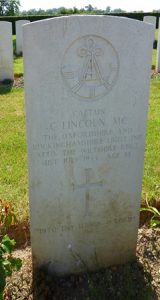
John Cyril Lloyd, Sergeant, 973800, Royal Air Force Volunteer Reserve. John was born on 22 March 1921, the son of David Rhys Lloyd and Lydia Lloyd (nee Lewis), of Brynhyfryd Farm, Aberdyfi. He enlisted into the Royal Air Force Volunteer Reserve after the outbreak of war and was posted to No. 22 Operational Training Unit, which was based at RAF Wellesbourne Mountford, in Warwickshire. John took ill whilst undergoing training and died in the RAF Hospital, Church Village, of heart failure and pulmonary tuberculosis on 4 September 1943, aged 22. He is buried in Aberdyfi Cemetery.
John Vincent Parry, Cadet, Merchant Navy. John was born in 1924, the son of John Parry and Agnes Parry (nee Davies), of 39, Copper Hill Street, Aberdyfi. He joined the Merchant Navy as an apprentice and was posted aboard the MV Trevilley. On 29 January 1941 he was aboard the ship, anchored in the Firth of Clyde, when he fell and knocked his head, fracturing his skull and breaking his leg. John died that same day, aged just 16 years old. He is not commemorated by the CWGC. On 22 October 1942, Trevilley was torpedoed by the submarine U-68 and sunk with the loss of 35 lives.
John Llewelyn Rees, Flight Lieutenant, 39158, Royal Air Force. John was born on 7 May 1911, the son of the Reverend Nathaniel Rees and Margaret Sarah Jane Rees (nee Thomas), of The Vicarage, Ferndale. The family later resided at The Vicarage, Arthog. John was living at Rosehill, Aberdyfi prior to training as a pilot, and gained his Royal Aero Club Pilot’s Certificate at the Cardiff Aeroplane Club on 4 July 1934. He married physiotherapist and fellow pilot Helen Christina Easson Evans in London in 1939. John had been commissioned into the Royal Air Force in 1936, training at 11 Flying Training School. By 1940, John had been posted to at 15 Operational Training Unit, at RAF Harwell, as a Pilot Instructor. On 5 August 1940 he took off from Harwell aboard a Vickers Wellington I, Serial L4264, on a training flight around the aerodrome, but the aircraft stalled whilst turning and crashed into a nearby field, Killing John and two other men, Pilot Officer Lester and Pilot Officer Arup. John’s remains were brought home for burial by his father at St. Catherine’s Churchyard, Arthog.
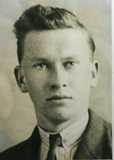
Wilfred Owen Shortland, Sergeant, 562875, Royal Air Force. Wilfred was born on 12 March 1912, the son of Henry Robert Shortland and Susannah Shortland (nee Williams), of 68, Greasby Street, Liverpool. His father was a former soldier who had moved to Aberdyfi prior to 1891 to gain work, and had married Elizabeth there. They lived at 23, Sea View Terrace, Towyn prior to the war. Wilfred had enlisted into the Royal Air Force on 13 March 1930. He married Florence Elizabeth Claridge in 1937. By 1940 Wilfred was serving with 15 Squadron, RAF, which was based at RAF Alconbury, Cambridgeshire. On 12 May 1940 Wilfred was flying aboard a Bristol Blenheim Mk IV, Serial L8849, which had taken off from Alconbury as part of a number of aircraft despatched to bomb the Albert Kanaal Bridges at Maastricht. He was killed, along with his pilot, Flying Officer Peter Douglass, when their Blenheim crashed near Maastricht that day. Their wireless operator survived and was taken pow. Wilfred was 28 years old and is buried in Heverlee War Cemetery, Belgium.
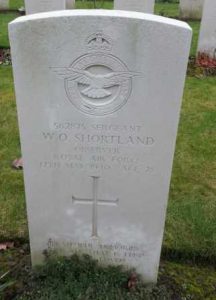
John Smith, Sergeant, 7923001, 9th Queen’s Royal Lancers. John was born in 1906 the son of George Smith and Mary Smith (nee Kitching), of Monk Bretton, Yorkshire. He married Charlotte Irma Smith, of Marsh, Huddersfield and the couple lived at Aberdyfi prior to the war. John served with the 9th Queen’s Royal Lancers, which formed part of the Royal Armoured Corps. The regiment had landed in France to cover the retreat to Dunkirk in 1940 and after being evacuated to England, landed in North Africa in September 1941, playing a leading part in the First Battle of El Alamein in July 1942. It continued to play a leading role in the North African campaign thereafter, and following the capture of Tripoli helped drive the Germans out of Libya. On 22 April 1943, Operation Vulcan was launched towards Tripoli, and over the coming days many tanks were lost. John was killed in action on 26 April 1943, at the height of the operation. The 36-year-old has no known grave and is commemorated on the Medjez-el-Bab Memorial, Tunisia.
John Whittaker, MiD, Flight Lieutenant, 77998, Royal Air Force Volunteer Reserve. John was born on 6 March 1896, the son of John Henry Whittaker and Alice Whittaker, of 52, Church Street, Padiham, Lancashire. He had served during the Great War with the Manchester Regiment, and after being demobilised married Alice Badger, at Clitheroe, before enlisting into the Royal Air Force. By 1939 he had retired, and the couple were running the Penhelig Arms, at Aberdyfi. John was re-commissioned into the Royal Air Force Volunteer Reserve on 6 March 1940. On 22 May 1943 he relinquished his commission on account of ill health and returned home to Aberdyfi where he died on 28 June 1943, aged 48. John is buried in Aberdyfi Cemetery. He had been mentioned in despatches during the war, in the King’s Birthday Honours List of 1942. John is not commemorated on the Aberdyfi War Memorial.
David Michael De Reuda Winser, MC, Lieutenant, 305697, Royal Army Medical Corps. David was born on 12 March 1915, the son of Commander Alfred Michael Winser, R.N. and Elizabeth Marjorie Winser, of Hampstead, London. His mother died during his birth, and his father, a Commander in the Royal Navy, married Frances Alice Sayer, a former Wren, at Pennal in 1922. David was then raised at Bryneithin, Aberdyfi before leaving to begin his studies at Winchester and at Corpus Christi College, Oxford where he trained as a doctor. He rowed three years for Oxford, and was part of the winning crew at the 1937 boat race. David was the Newdigate Prize Winner, gaining a scholarship for Yale University and worked at Charing Cross Hospital during the Blitz, before volunteering for the Royal Army Medical Corps. He then volunteered to join the newly formed Commandos, completing his training at Achnacarry before becoming the Medical Officer for No 48 Royal Marine Commando. David landed on the Normandy beaches with 48 Commando on D-Day and was awarded the Military Cross for his gallant work attending to wounded men on the beaches: ‘Throughout the action, the medical personnel have behaved with great gallantry. I attribute this to the training, leadership and personal example under fire of Lieutenant Winsor. He repeatedly attended the wounded under fire both on the beach and in Langrune. His attitude was at all times calm, reassuring and unshaken however heavy the casualties or trying the circumstances. The casualty figures for 48 Commando will bear witness to the magnitude of the tasks which he accomplished successfully’. He was then injured in an accident, but returned to his unit in time to take part in the famous landings at Walcheren on 1 November 1944. David was tending to a wounded officer, Captain Davies, when they were hit by a mortar shell and killed. Reverend Wood described him as ‘One of the finest doctors I have ever known. He was only a year older than me, but I regarded him with something close to hero worship. He was just great; all of our men loved him. He was in every way estimable’. David was 29 years old and is buried in Bergen-Op-Zoom War Cemetery, Netherlands.